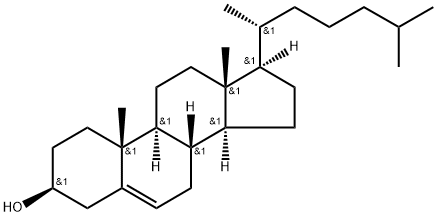As cholesterin seems to be a constituent of most if not all cells, it may be assumed that it is of some importance, even though the quantity is generally small, yet to this time its real purpose has remained practically unknown.
Cholesterin is widely found and distributed in animal bodies, and is especially most abundant in the brain and nerve tissue. It also has high content in the kidney, spleen, skin, liver and bile. The solubility of cholesterin is similar to that of the fat which is insoluble in water, but easily soluble in ether, chloroform and some other solvents.
The main physiological function of cholesterin participating in forming cell membranes, myelin, brain, and can be further converted to bile acids and steroid hormones. There are two major lipoproteins which are involved in cholesterin transport: the low density lipoprotein (LDL) and high density lipoprotein (HDL). The former can transport cholesterol from the liver to the cells of whole body tissues, while the later one transports cholesterol from tissue cells back into the liver.
Chemically, cholesterin is one of the most inert of the body constituents, and it seems improbable that it plays any part in metabolic processes, for which reason there have been those who have been content to consider cholesterin as merely a by-product in cell metabolism, which was present in the cells in recognizable quantities, chiefly because its resistance to alteration made its removal slow.
The cholesterol level in the blood can reflect the overall metabolism condition of cholesterol. The total cholesterol content in the blood plasma of normal adult of empty stomach is about 2.83~5.17mmol/L. Abnormal cholesterol metabolism could easily lead to deposition of cholesterol in the blood vessel wall, forming atherosclerosis, causing coronary heart disease and stroke.
Cholesterin is closely related to the body tissues, bile acids and hormones. It is an indispensable substance of animal tissue cells, which is not only involved in the formation of cell membranes, but also as the precursor for the synthesis of bile acids, steroid hormones and vitamin D3.

